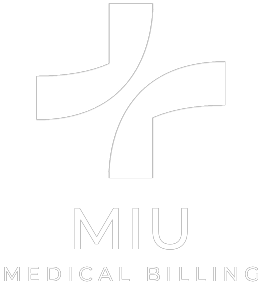Introduction
In the complex world of healthcare, navigating the intricacies of medical billing and coding can be daunting. This intricate process is the backbone that ensures healthcare providers receive appropriate reimbursement for the services they provide and patients are billed accurately based on their insurance coverage. Medical insurance billing and coding involve translating medical diagnoses, procedures, and services rendered into standardized codes that insurance companies can interpret and process. Understanding how this system works is crucial for healthcare providers and patients to ensure smooth financial operations and avoid costly billing errors or denials.
The Role of Medical Insurance Billing and Coding Specialist

Medical insurance billing and coding begin with the essential task of medical coding. This process involves trained and certified medical billing and coding specialists meticulously reviewing a patient’s medical record and assigning specific codes to the diagnoses, procedures, and services documented by the healthcare provider. These codes are derived from standardized coding systems, such as the International Classification of Diseases (ICD) for diagnoses and the Current Procedural Terminology (CPT) for medical procedures and services.
Medical coding accuracy is paramount, as it directly impacts the healthcare provider’s reimbursement and the patient’s financial responsibility. Certified medical billing and coding specialists play a vital role in ensuring that claims are submitted correctly and in compliance with coding guidelines and insurance regulations.
The Medical Billing Process
Once the medical coding is complete, the medical billing process can commence. This typically involves the following steps:
- Charge Entry: The assigned codes and the corresponding fees for each service are entered into the healthcare provider’s billing software or system.
- Claims Submission: The billing software generates a claim containing the patient’s information, insurance details, assigned codes, and the charges for the services provided. The claim is then submitted electronically or on paper to the patient’s insurance company for reimbursement.
- Claims Processing: The insurance company reviews the submitted claim to ensure the services provided are covered under the patient’s insurance plan. They also check for accuracy in coding and adherence to billing guidelines.
- Adjudication: Based on the insurance plan’s coverage and the codes submitted, the insurance company determines the eligible amount for reimbursement and any patient responsibility, such as co-pays, deductibles, or coinsurance.
- Payment and Remittance: The insurance company sends the appropriate reimbursement amount to the healthcare provider and provides remittance advice (RA) that explains the payment details, including any adjustments or denials.
- Follow-up: The healthcare provider’s billing staff reviews the RA and follows up on denied or underpaid claims, appealing or resubmitting them if necessary.
Explain the role of a claims clearinghouse
In medical billing and coding, clearinghouses are crucial intermediaries between healthcare providers and insurance companies. These entities act as a centralized hub, receiving claims from healthcare providers and ensuring they are formatted correctly and comply with the specific requirements of each insurance company.
The role of a claims clearinghouse process by:
- Verifying patient eligibility and benefits
- Editing claims for coding accuracy and completeness
- Translating claims into the appropriate electronic formats required by insurance companies
- Submitting claims to the appropriate insurance companies
- Receiving and relaying claim status updates and remittance advice back to healthcare providers
Healthcare providers can save time and resources by utilizing clearinghouses while ensuring their claims are correctly submitted and processed efficiently.
Compliance and Regulations
Medical insurance billing and coding are highly regulated processes governed by various laws and regulations. Healthcare providers must strictly adhere to coding guidelines and billing practices set forth by organizations such as the Centers for Medicare & Medicaid Services (CMS), the American Medical Association (AMA), and the National Correct Coding Initiative (NCCI).
Failure to comply with these regulations can result in severe consequences, including:
- Claim denials and reduced reimbursements
- Fines and penalties for coding errors or fraudulent billing practices
- Potential legal action and damage to professional reputation
To maintain compliance, healthcare providers must invest in ongoing training and education for their medical coding and billing staff. Additionally, they should implement robust quality assurance processes to ensure the accuracy of coding and billing practices.
Challenges and Best Practices
While medical insurance billing and coding is a necessary and critical process, it has its challenges. Some of the common hurdles faced by healthcare providers and billing professionals include:
- Keeping up with coding updates and regulatory changes
- Managing denials and appeals
- Ensuring timely claim submissions and reimbursements
- Maintaining staff training and expertise
- Implementing efficient coding and billing workflows
To overcome these challenges and optimize the medical insurance billing and coding process, healthcare providers can adopt the following best practices:
- Invest in robust medical coding and billing software solutions that are regularly updated and compliant with industry standards.
- Prioritize staff training and certification to ensure coding accuracy and adherence to billing guidelines.
- Implement strict quality assurance protocols, including regular audits and peer reviews, to minimize coding errors and billing discrepancies.
- Establish efficient communication channels between clinical and billing staff to ensure accurate and timely documentation and coding.
- Leverage clearinghouses and streamlined claim submission processes to improve efficiency and reduce claim denials or delays.
- Conduct regular performance reviews and data analysis to identify areas for improvement and optimize billing processes.
Conclusion
Medical billing and coding a complex and ever-evolving processes at the heart of healthcare financial operations. It involves translating medical diagnoses, procedures, and services into standardized codes that insurance companies can interpret and process for reimbursement. This intricate system requires precision, compliance, and continuous optimization, from medical coding to claims submission, adjudication, and follow-up.
Healthcare providers can ensure accurate reimbursements, maintain regulatory compliance, and streamline their financial operations by understanding the intricacies of medical insurance billing and coding. Patients, too, benefit from a transparent and efficient billing process, minimizing confusion and potential billing errors.
As the healthcare industry evolves, embracing best practices, investing in staff training, and leveraging technology solutions will be crucial for healthcare providers to successfully navigate the complexities of medical insurance billing and coding. By doing so, they can focus on delivering high-quality patient care while maintaining financial sustainability and operational efficiency.




